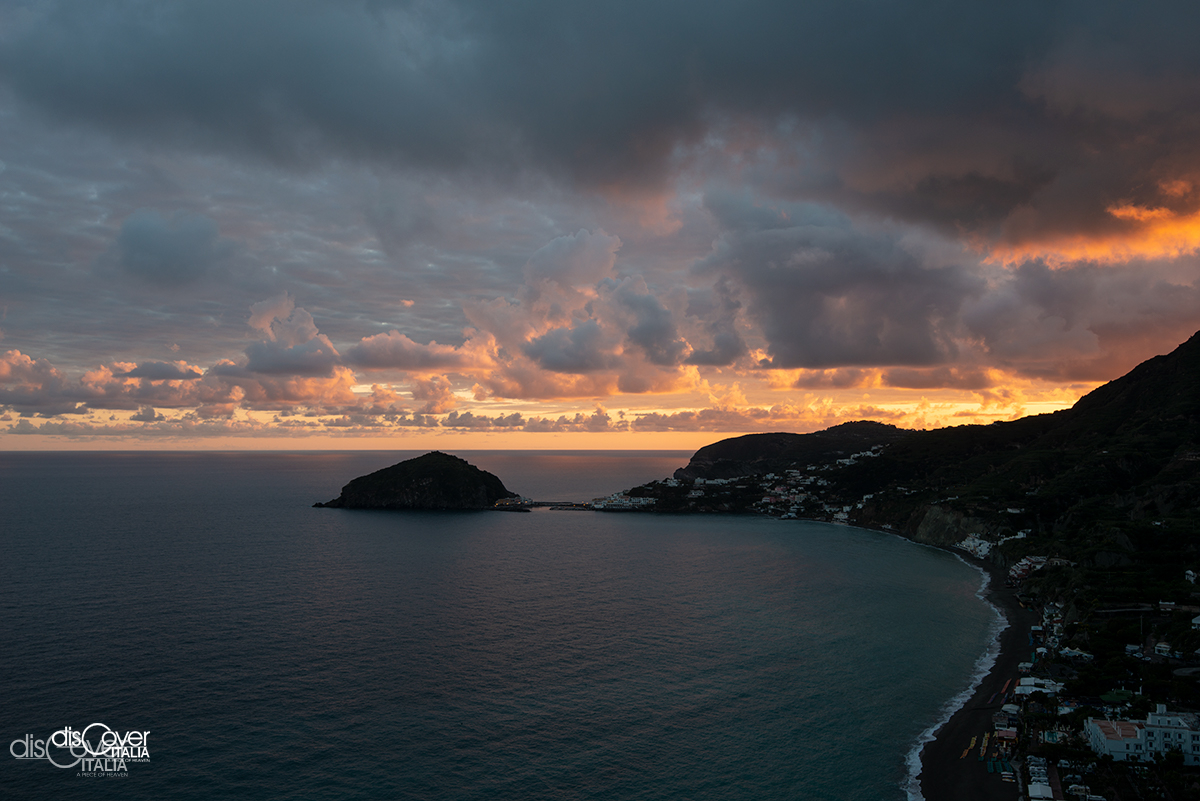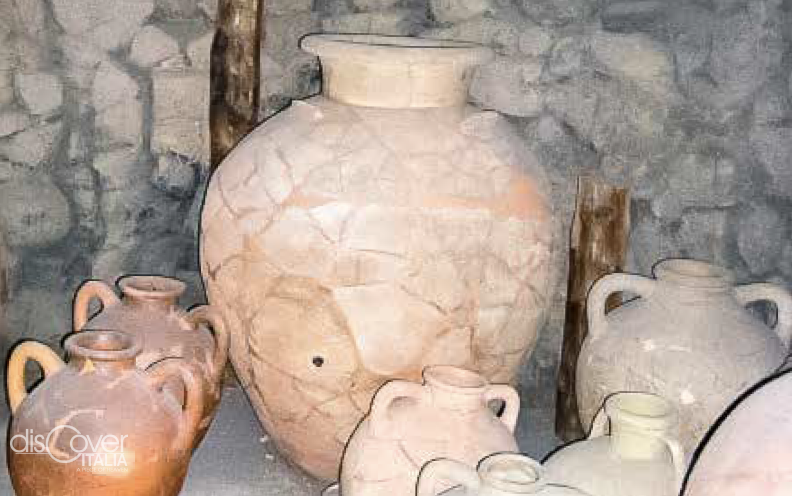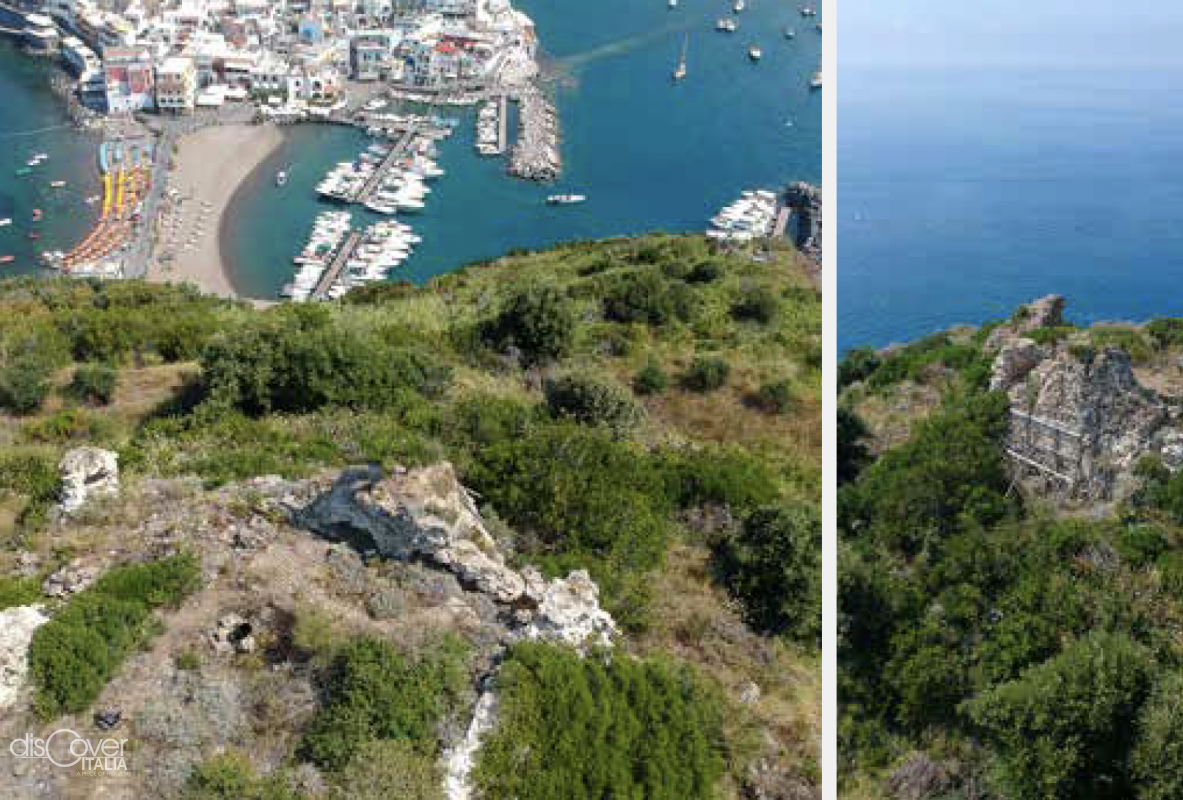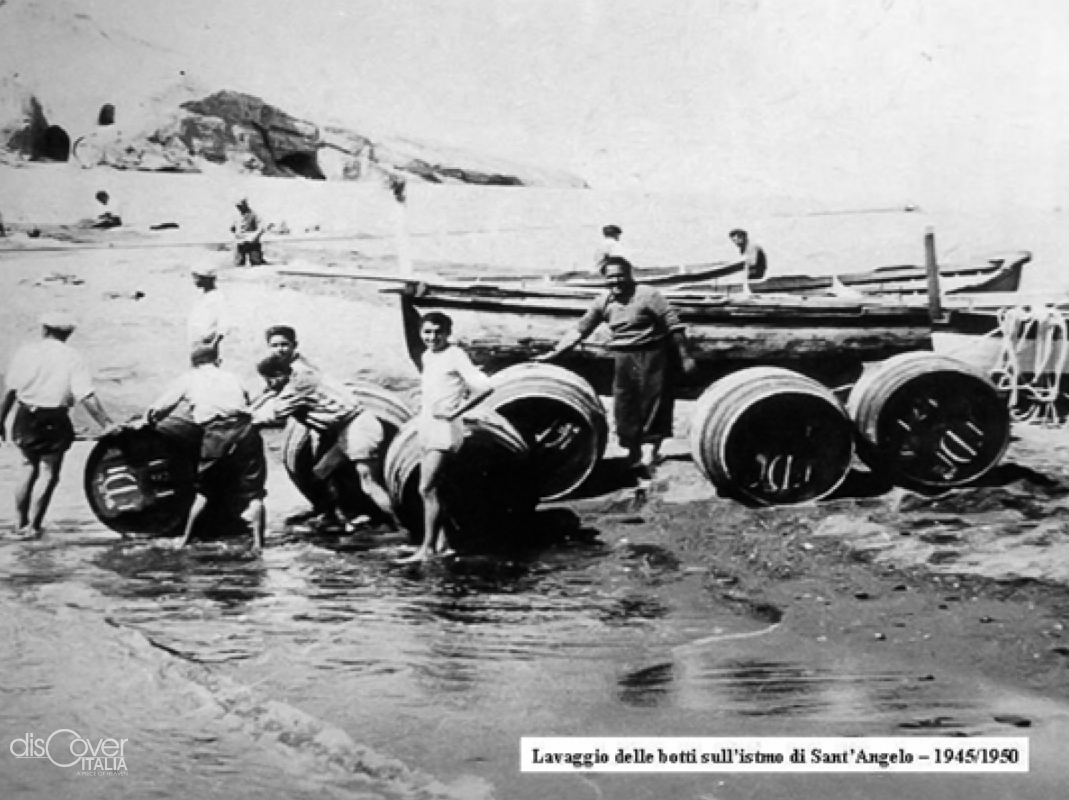 Fountains of fire in the middle of the sea. Straight from the core of the earth where lava rose dense and copious, arranged in layers and quickly solidifying. It didn’t take long for earth and fire, with the help of water and air, to build that new submerged hill that geology would later define “lava dome”. A long sequence of events shaped the islet giving it the characteristic rounded shape that, different from the other lava dome of the Aragonese Castle, makes it today recognizable and unmistakable in front of the southern coast of the main island. Of which many vicissitudes and transformations, historical and geographical, it found itself to be witness and guardian over tens of thousands of years.
Fountains of fire in the middle of the sea. Straight from the core of the earth where lava rose dense and copious, arranged in layers and quickly solidifying. It didn’t take long for earth and fire, with the help of water and air, to build that new submerged hill that geology would later define “lava dome”. A long sequence of events shaped the islet giving it the characteristic rounded shape that, different from the other lava dome of the Aragonese Castle, makes it today recognizable and unmistakable in front of the southern coast of the main island. Of which many vicissitudes and transformations, historical and geographical, it found itself to be witness and guardian over tens of thousands of years.
It is only one narrow strip of sand that connects the islet to the giant dominated by the green peak of the Epomeo. Insula Maior on that particularly exposed and vulnerable side presents a scenario made of verdant hills, high and steep rock walls, promontories and sandy shores. The very proximity of these elements attracted the attention of the sailors of Pithekoussai, who knew well the sea around the island on which they had recently settled (first half of the VIII century BC): the promontories were precious natural lookouts, while the marines favored the landing of boats. With the advantage that all around there was land useful for agriculture and also for building new villages.
FROM COLAMARINA WATCH OUT FOR ETRUSCANS AND PHENICIANS
 hat stretch of coast starting from Punta Chiarito, with a "farm", fulcrum of an agricultural property in a strategic position for the maritime and pirate activities of the owners, offered various favorable places for small settlements of farmers, dedicated to the cultivation of wheat and grapevines , that the Greeks had introduced on the island.
hat stretch of coast starting from Punta Chiarito, with a "farm", fulcrum of an agricultural property in a strategic position for the maritime and pirate activities of the owners, offered various favorable places for small settlements of farmers, dedicated to the cultivation of wheat and grapevines , that the Greeks had introduced on the island.
There was a well-protected valley, currently Cavagrado, and they settled there in the last decade of the VIII century. The marina was perfect for the ships connecting with Pithekoussai and there was also a spring of thermal water. And the surrounding land was fertile and well exposed. The ceramic findings discovered by archaeologists tell of an everyday life that lasted until the VI century BC. While fragments of painted tiles recall the presence of a temple.
A little higher, the plain of Rufano was also inhabited by Greek farmers. They soon occupied and cultivated the small hill of Colamarina, overlooking the islet stretching out into the sea. From that point the bays on the sides of the sandy strip could easily be dominated and it was possible to readily identify and report the passage, on the route traveled by the Etruscans and Phoenicians, of potentially hostile ships or even competitors of the commercial fleet of Pithekoussai.
Fertile, but bizarre land. It was for this reason that the Greeks abandoned it in the second half of the VI century. And there were no returns for a long time. It took five hundred years for a new village to be born in Colamarina in Roman times and for a thriving agricultural activity to resume there.
MONKS ON THE ISTMO: WAR, EARTH AND PEACE
 Just as the terraces shaped the coastal crags of the large island since the arrival of the Pithecusans, in the Middle Ages the same happened along the sides of the islet, which just then began to be called Sant'Angelo. All thanks to the monks of San Benedetto, that before the year 1000, had built a monastery named Sancti Angeli alloquio on the top of the lava dome, where the work of the earth was accompanied by prayer.
Just as the terraces shaped the coastal crags of the large island since the arrival of the Pithecusans, in the Middle Ages the same happened along the sides of the islet, which just then began to be called Sant'Angelo. All thanks to the monks of San Benedetto, that before the year 1000, had built a monastery named Sancti Angeli alloquio on the top of the lava dome, where the work of the earth was accompanied by prayer.
In the green oasis in the middle of the sea, the particular exposure of the various sides was best exploited. The southern sun was best for the cultivation of wheat and legumes, while lush vineyards, olive groves and orchards grew in front of the large island for the self-sufficiency of the monastery. It became the center of worship in honor of St. Michael Archangel, which the Benedictines had introduced to the island when it was already widespread in southern Italy. And the annual holiday of the warrior saint in Autumn attracted fishermen from the small village that grew on the other side of the sandy strip every year to the islet, to which also joined inhabitants of the villages scattered around the foot of Epomeo.
THE TOWER IN RUINS
 The small abbey on the islet remained open for worship even when the Benedictines left the island. And it was untouched by the new factory started in its vicinity during the Aragonese period: a tower, an integral part of the defensive system that was built along the entire perimeter of the island, threatened by barbarian pirates. That promontory was in a strategic position to spot hostile ships and sound the alarm with light signals to the Watchtower on the Epomeo and the tower of Panza.
The small abbey on the islet remained open for worship even when the Benedictines left the island. And it was untouched by the new factory started in its vicinity during the Aragonese period: a tower, an integral part of the defensive system that was built along the entire perimeter of the island, threatened by barbarian pirates. That promontory was in a strategic position to spot hostile ships and sound the alarm with light signals to the Watchtower on the Epomeo and the tower of Panza.
With a rectangular base, the structure was accessible via a wooden drawbridge. And on the second floor there were openings to scan the sea and weapons for defense.
Under Gioacchino Murat, king of Naples, at the end of 1808, the Anglo-Bourbon fleet began to cannonade relentlessly the villages on the southern coast of the island. The answer came from the Tower of Sant’Angelo, equipped with heavy pieces. After hours of fighting, a shot from the sea reached the powder magazine, setting the entire fortress on fire. And the ancient church was also reduced to a pile of smoking rubble. It was the last chapter in the history of the islet then completely abandoned.
THE WINE WITH..A SUITCASE
 Cereals and legumes towards the sea, vines, olive trees and figs on the internal part, the islet remained a resource for the village clustered around the beach, at the bottom of the strip of sand. Small houses, set in the rock, for families of fishermen / farmers. The inhabitants of Sant’Angelo, men and women, worked hard, from morning to evening in every season. At sea, dedicating themselves to fishing, and on land, in the grounds of the Tower, as they had begun to call the islet, or in those behind the town, going up the hill, connected by paths to the nearest farmhouses.
Cereals and legumes towards the sea, vines, olive trees and figs on the internal part, the islet remained a resource for the village clustered around the beach, at the bottom of the strip of sand. Small houses, set in the rock, for families of fishermen / farmers. The inhabitants of Sant’Angelo, men and women, worked hard, from morning to evening in every season. At sea, dedicating themselves to fishing, and on land, in the grounds of the Tower, as they had begun to call the islet, or in those behind the town, going up the hill, connected by paths to the nearest farmhouses.
Thanks to the rich fishing, daily food was ensured, with the integration of the products of the earth. These, then, of excellent quality, could be sold in the rest of the island and beyond the sea. To Naples, from where they returned with other necessary products that cannot be found in the town and some money.
Among the many, wine production was the most precious. At the agreed time, once a year, the winemakers came down to the village with mules loaded with wine to be exported. At the foot of the islet, each one unloaded into huge tanks, where wine was mixed before filling the barrels that were then thrown into the sea and then hoisted aboard the sailing ships. That community wine started from the small port of Sant'Angelo towards Tuscany. Days and days of travel to reach Piombino and unload the barrels of generous Santangiolese red wine, very famous in the Chianti region. To be sold, very often, just like that...
Having lost the abbey on the islet, in 1850 the construction of a new church was started in the upper part of the village of Sant’Angelo, where there was already a chapel of the Calosirto, family of Saint Giovan Giuseppe Of the Cross. In that new church, that became a parish in 1905, the statue of St. Michael the Archangel was transferred.
From there, every year, the revered image of the warrior Saint descends to the sea for the evocative choral celebrations, involving the entire town and the Tower. Thus, on the night of September 29 the sea lights up even reaching Maronti. Flashes of fireworks in the shadow of the islet that the fire created.
Copyright video, foto e testi © 2020





Comments powered by CComment